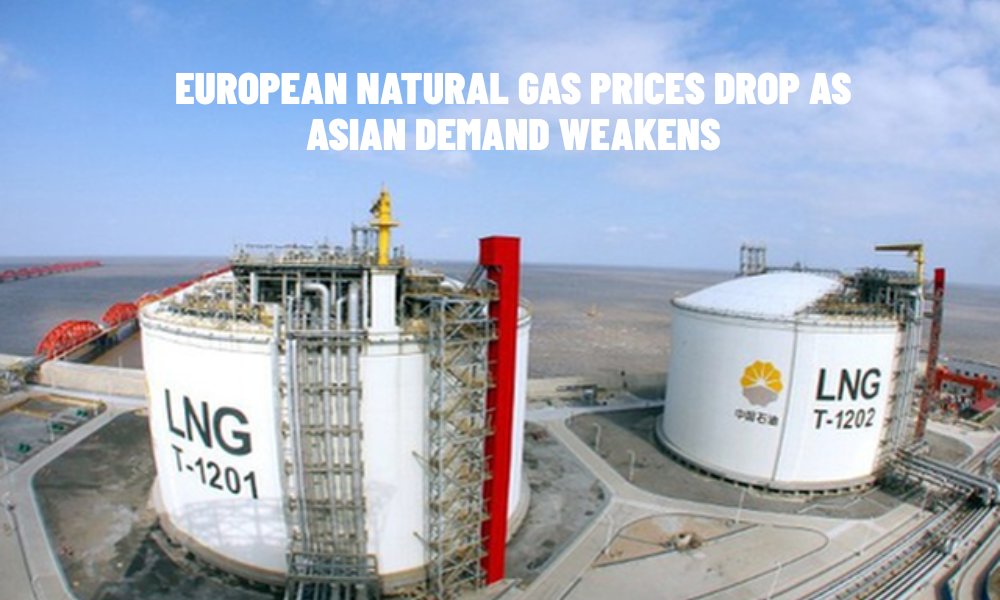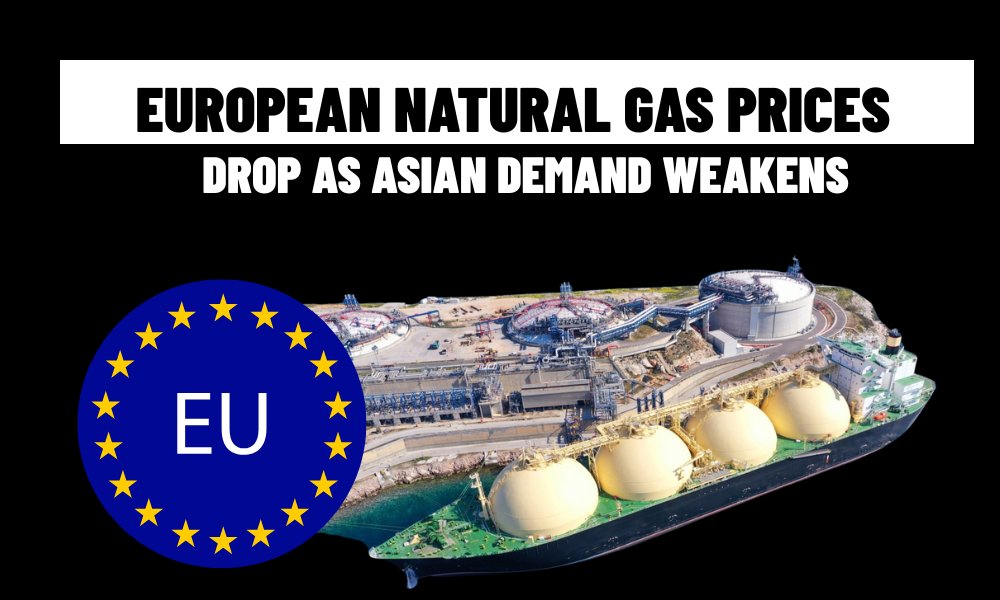European natural gas prices have fallen sharply due to declining demand in Asia, easing supply pressures. This article examines the factors behind the price drop, its implications for energy markets, and what investors need to know in this shifting landscape.
Natural Gas Prices Slide in Europe
European natural gas prices have declined significantly, driven by a sharp reduction in demand from Asia, a key consumer of global liquefied natural gas (LNG). On April 27, 2025, Dutch TTF futures, the benchmark for European gas, settled at €35 per megawatt-hour, down 12% from their mid-April peak. This drop reflects a broader easing of supply concerns as Asian markets, particularly China and Japan, scale back LNG imports amid economic slowdowns and milder weather forecasts. For energy investors and policymakers, this shift signals a critical moment in the global energy market.
The price decline comes as a relief for European consumers grappling with high energy costs, but it also raises questions about the sustainability of current trends. With global trade tensions and geopolitical risks still in play, understanding the drivers behind this market movement is essential.

Weak Asian Demand Drives Market Shift
Asia’s reduced appetite for LNG is the primary catalyst for the fall in European gas prices. China, the world’s largest LNG importer, has cut imports by 8% year-on-year due to slower industrial activity and increased domestic renewable energy output. Japan, another major buyer, is seeing lower demand due to warmer-than-expected spring temperatures, reducing the need for gas-powered heating. These factors have freed up LNG cargoes, many of which are now redirected to Europe, boosting supply and pushing prices down.
Europe’s robust storage levels, currently at 92% capacity, further alleviate supply pressures. Unlike the volatility of 2022, when Russian pipeline disruptions spiked prices, the region’s diversified LNG imports from the U.S. and Qatar have stabilized the market. However, posts on X suggest cautious optimism among traders, with some warning that unexpected demand surges or supply chain disruptions could reverse gains.
Implications for Energy Markets
The drop in natural gas prices offers short-term relief for European households and industries, particularly energy-intensive sectors like manufacturing and chemicals. Lower energy costs could ease inflationary pressures, supporting the European Central Bank’s efforts to stabilize the eurozone economy. However, the decline poses challenges for LNG exporters, especially in the U.S., where producers may face narrower profit margins as global prices soften.
For investors, the natural gas market’s current dynamics highlight both opportunities and risks. Energy ETFs tracking natural gas, such as the United States Natural Gas Fund (UNG), have seen increased volatility, with shares dipping 5% in the past week. Conversely, companies with strong LNG export infrastructure, like Cheniere Energy, may benefit from Europe’s growing reliance on non-Russian gas. Investors should monitor macroeconomic indicators, including Asian economic data and European storage reports, to gauge the longevity of this price trend.

Geopolitical and Seasonal Risks Linger
Despite the current downturn, risks to natural gas prices remain. Geopolitical tensions, including potential escalations in the Middle East or disruptions in key shipping routes like the Strait of Hormuz, could constrain LNG flows. Additionally, while spring demand is typically low, an early or severe winter in 2025 could strain Europe’s storage reserves, pushing prices back up. The International Energy Agency has warned that global LNG supply growth may slow by 2026, potentially tightening markets if demand rebounds.
Recent posts on X reflect mixed sentiment, with some analysts pointing to the IMF’s warnings of a global economic slowdown as a bearish signal for gas demand. Others highlight Europe’s proactive diversification of supply sources as a buffer against volatility. These perspectives underscore the need for investors to stay vigilant in a complex market.
